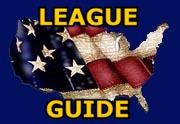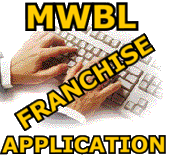HOOKS FOREMAN
Hooks Foreman – Modern, Draft, AIM
Hooks Foreman is an AIM draft manager designed generally to handle modern games. He can, however, be used for other pre-modern games but his player usage, especially with pitching where he uses a pitcher’s recovery factor (or RF) as a key guide, may be too aggressive for such competition. Best with MBFs/BFs for pitchers on but this isn’t mandatory. Should not be used with AIM off.
IMPORTANT NOTE: Foreman DOES NOT set aside/bench starting pitchers or a team’s rotation. You MUST bench your starters with your franchise files. Otherwise ALL PITCHERS will be used in relief.
Hooks Foreman is based essentially on the Buck Miller managers (chiefly Miller IV) with several key differences.
1) Foreman uses a starting pitcher’s recovery factor (or RF) as a critical measure when deciding when to pull him. Whenever a starting pitcher matches his RF times three (and the bullpen is “decent”), Hooks will almost always pull him. However, if it’s a close game (+/- 3 runs) and the starter’s current effective grade (that’s: grade+control ratings+platoon advantage) is greater than the reliever’s current effective grade (grade+control ratings+platoon advantage+first batter effectiveness), the starter will not be removed. In non-close games, the starter will be removed.
However, in both instances (close or non-close games) the team’s bullpen has to be what is considered “decent”. That is defined as at least 2 available relievers with a combined total workable batters of at least 14 (and more if it’s before the eight).
The idea behind this (RF times 3) is to always have the starter ready to pitch with 3 day’s rest. So, Foreman is essentially managing a “four man rotation.”
2) Foreman may pull a starter BEFORE he reaches that RF * 3 figure (e.g., blowouts mostly).
3) Because this RF*3 will usually lead to a quick hook (especially for low RF pitchers), Foreman has to be a bit more conservative with his relief strategies. While he will aggressively pull a starter, he’s a bit more restrained with relief decisions. At least more “conservative” than the Miller managers. This is to prevent bullpen burnouts (generally, you’re going to need at least two starters with RFs of 9 or more; otherwise, Hooks will go through a bullpen).
Otherwise, Hooks is nearly identical to Miller III in that he uses a quick (mostly) modern hook with his starters especially in either save situations or with safe leads late. He selects closers late by adjusted grades (grade plus or minus control ratings).
Normal closers will be those with adjusted grades of between 13 and 16. Super type closers (e.g., a Rivera) will have 17 plus grades. For the most part, he will use closers for one inning; however in critical situations (2 runners on, one or more outs, in the eighth) he will spot the closer for a inning+ of work. Additionally, if the closers have low QRs (2/1) they will also be used for multiple innings (usually a maximum of 2). Remember, RRs are important as well. Setup relievers are heavily employed, especially with platoon advantages. One batter relief specialist (e.g, average less than one inning per outing) are also used but Hooks is more conservative with this than the Miller programs.
Low inning starters will be pulled quickly to save their innings. Also, with safe leads, starters will be yanked especially if the bullpen is strong and/or itchy relievers need outings. High RF pitchers will be generally be given a slower hook in blowout/lopsided games, however.
Note: a tough area to program is middle or long relief. If your team doesn’t have a long reliever type (e.g, QR of 2/1), Hooks will try and rotate several short relief types (low grades/saves) for early-to-mid inning outings. This is a bit problematic with Hooks RF * 3 approach since using short role relievers for longer outings will compromise his hook (i.e., thinner pen).
Offensively, as with the Miller managers:
Both steal and H&R and steal chance driven. Stealing is limited to 100% or historic totals.
Bunting is quite limited to low power/average hitters early; little more aggressive late in critical situations. SO per AB and SH per AB are critical factors in bunting (other factors are also considered).
Aggressive PHing with platoon disadvantages. Will PH to pad lead late (but not for best defensive players); for DH with platoon disadvantage; for a better H&R; to bunt late; for an announced PHer against a new pitcher with a platoon advantage.
Aggressive subbing in blowouts; DS, PH for star players, PR for stars and subbing defensively will be seen.
Base advancement based on advance chances (internal number provided by game plus OF/Inf arm plus speed).







